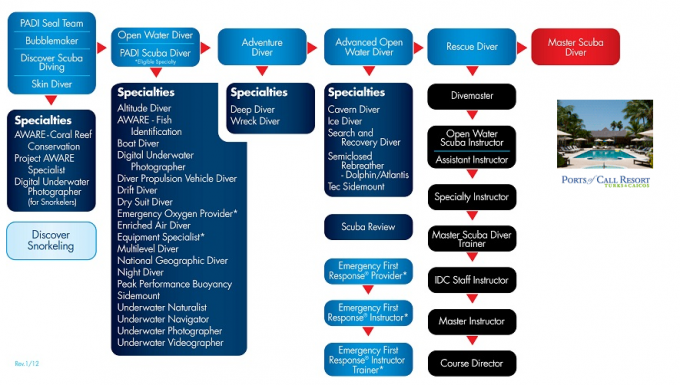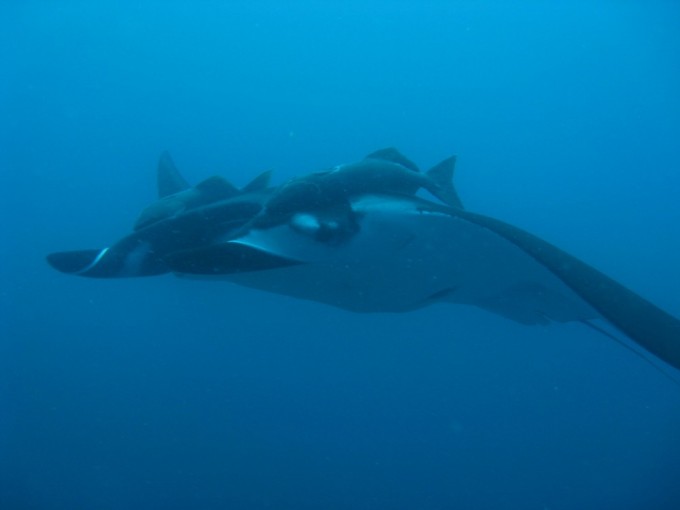Part of the fun about travel is visiting new places and seeing new things. In fact I would say that was the entire fun about travel but I am sure some cantankerous points hounds would disagree with me; apparently its often quite fun to sit in First Class sipping on Dom Perignon Champagne whilst strapped into a dentists chair.
However, for me it is really about seeing places, and when you think of exotic destinations that are on many people’s bucket lists it is frequently places by the Sea that have some of the most amazing sites, and once there, if you don’t know how to dive, you are only scratching the surface of the experience you could have.
Both Allison and I are Certified Rescue Divers by PADI, one of the leading organisations for Scuba Diving, some others that are well known and reputable would include Naui and SSI, though most days I only see PADI on offer at most resorts. Each organization has a slightly different program structure, but they are interchangeable, and once you have the entry level certification in any of these you are ready to dive!

Since I certified through to my current level with PADI I am going to focus this article on the requirements for their courses.
PADI Open Water Diver
This is the minimum level of certification that you require to be a diver, there are other courses (like bubblemaker, Discover Scuba etc) , but if it isn’t called Open Water Diver then next time you visit the Maldives and show your Dive Card they will say you are not a certified Diver. The Open Water Course can be a challenge for some people, whilst it is fun and the learning requirements are relatively easy there are a lot of unfamiliar experiences which can take some time to grasp.
Sitting on the bottom of the Ocean and removing your mask is something like jumping out of a perfectly good plane, sure you have a parachute but its a pretty dumb idea, though it is more fun than blinking out salt water from your eyes. The idea with the training for Open Water is to make you comfortable with the things that can, and do go wrong when diving so you don’t panic. Truthfully, despite all the scare tactics most commercial dives are very safe, and even if you run out of air at the bottom of your dive you will make it out OK. Diving becomes a lot more risky when it becomes technical diving at extreme depths, or in caves where there is no direct route upwards to safety.
Typical Course Structure
Theory
There will be a theory test based upon reading and videos on safety for diving, teaching you about the risks that can come from being at pressure and nitrogen’s effect on the body.
Practical
5 Confined Water Dives Swimming Pools are often used for the first dives you will take, they allow you to reach enough depth to rely upon the equipment yet be in a very safe environment. You will uses these dives to become familiar with breathing underwater, and go through the basic safety measures. A key skill that you practice here in the pool is buddy breathing, where one of you will have no air and you will instead share your regulator, passing it back and forth between two people. The difference in the pool is that to do this for any length of time you need to swim a lap, rather than ascend, since the depth would mean you wouldn’t get any time to practice.
After 5 Confined sessions you should have gone through everything you need to dive, the only difference will be dealing with the size of the Ocean, and learning to deal with buoyancy and underwater navigation. There are 4 Ocean Dives, and if you can prove that you have mastered the skills, you are officially a Scuba Diver! You do learn a lot of skills in this time, though you will likely still be getting comfortable at managing your air consumption and buoyancy Here is a full list of the course requirements that you will cover as a MS Word Document Padi Open Water Requirements
You can complete the PADI Open Water Course in about 3 days, but they are going to be full and tiring ones. If you are doing this with a friend it can be fun, but if you are only one half of a Couple it might take a little negotiation as you will be both on separate time plans. My advice is to consider certification for Open Water prior to your trip, and when you arrive you get cracking with your dives. If you plan to do this there are two things to keep in mind:
- Keep minimal time between certification and first real dive, you need the reinforcement from diving post certification in order to really hammer home the skills, and internalize the learning. If you do feel there is too much of a gap, simply ask the dive shop on vacation to take you through a ‘Check Dive’ where they make sure you remember all the safety aspects from the course. They do this typically 1-on-1 and in very shallow water so you are most comfortable.
- Consider the environment where you could certify- if you live in a cool climate or it is Winter where you are diving might not be enjoyable. If you have too many bad experiences due to this during the learning process it might cast diving in general into a negative light.

Staying Safe When Diving
Once certified you will actually be able to dive without supervision, but it is generally recommended to take a Dive Master with you on Dives- they understand the local terrain and typically have a higher level of experience and competence than the average diver. You will find that all Boat Dives will come with Dive Master, and when booking dives in a location that requires a Dive Master a good metric is to ask how many divers to one Dive Master – I like no more than 6, and ideally 2-4. Larger groups require more ‘herding’ by the Dive Master than can be a pain, and keeping a pace that fits everyone in a larger group is tricky.
I blindly followed Dive Masters for many dives, but now I do not, they aren’t always the experts that you would hope, so make sure that you don’t trust them to be the perfect answer for dive control. In popular tourist destinations such as Thailand there are Dive Masters with 3 months total Diving experience. Whilst they have gone through the requisite number of dives they do not always have the depth of experience required to make the best judgement calls underwater all the time.
Dive Buddies
When Diving you will always ‘Buddy Up’ with another person (if there are an odd number of Divers you will Buddy with the Dive Master) if you ever decide to Dive unsupervised then the very least you need to do is take a Dive Buddy with you. Allison and I are Buddies when diving, but there are times when our Air isn’t synchronized, so our Dive length could be different. On one occasion Allison and another Diver were both getting low on air so the Buddies were broken up, they were paired up mid dive, and myself and the other girls Dive Buddy paired up. That was the last time that I followed the Dive Masters instruction blindly, as the other Diver with Allison ran out of air during the Ascent, and Allison had to share her Air to keep them safe.
The situation wasn’t safe, because Allison was also low on air, and when a diver runs out of air they can panic and be a threat to other divers – the decision by the Dive Master was to ensure I got a bit more bottom time on my dive which was nice, but since then whenever we have had a similar situation I disregard the Buddy resetting and Ascend with my original Buddy (especially if it is my wife!).
On another occasion we were diving in Vietnam with a Dive Master who badly misjudged how to handle a strong current, and forced the dive to follow the original pattern they had decided upon on the boat. In doing so we would kick at full force just to stay stationary, and would sometimes push forward, or backwards based upon current surge. We lost half of the divers that dive (the smart ones) as they decided to ignore the guy and flow with the current. We chomped through air and emptied our tanks in under 15 minutes, rather than the typical 45-60 minutes we would get if we were breathing normally. Fact is that for the most part these guys are well trained and good to follow, but every now and then you will get a lemon.
Join DAN – The Divers Alert Network
I’m not typically one for Insurance, but DAN is one that I don’t travel without – check them out here, they have annual insurance that covers at different levels http://www.diversalertnetwork.org/insurance/ DAN covers all sorts of in water and even out of water incidents, depending on your level of coverage – but one of the most important is covering Airlifts and Hyperbolic Chambers which easily run into the 5 figure mark in some locations.
Once you Certify, the next question should be: What Dive Equipment should I buy:
Leave a Reply